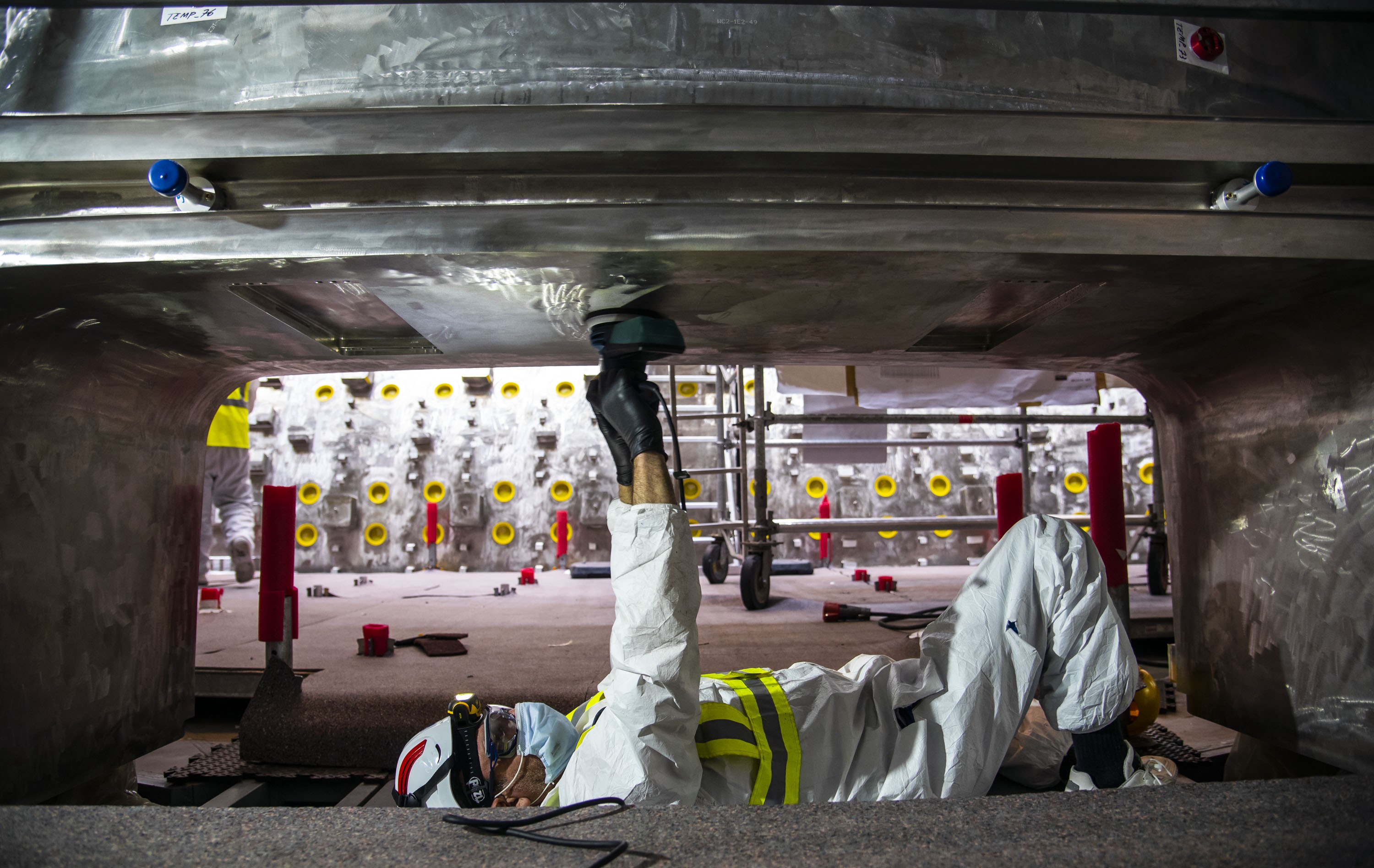Lessons learned reduce work time by half
In life as in the assembly of the ITER machine, "lessons learned" are what makes progress possible. Gains in wisdom, time, skill, investment can be incremental; they can also be spectacular. The ongoing preparation works on the second vacuum vessel sector, Sector #1(7), offer a striking example of the benefits that come with experience: whereas it took 36 work weeks to fit the first sector with sensors, cables and flux loops, it is expected that the same operations on the second sector will only require 15 to 17 work weeks—less than half the time.
Although the packaging of both sectors for shipment from Korea was similar, the duration of the unpacking operations was divided by two the second time around. "We knew from experience where to expect difficulties and we were able to anticipate and adapt," says Alex Martin, the head of the ITER Vacuum Vessel Section.
Once extracted from its transportation frame, cabin-sized metal box and multi-layered wrapping, the first vacuum vessel sector, Sector #6, had been subjected to a helium leak test. No leaks above the limit of detection were found and the values obtained were two orders of magnitude tighter than the acceptance criteria.
"We had full demonstration of the quality control procedures performed by the manufacturer, Hyundai Heavy Industries, and ITER Korea. So we decided that, as far as Sector #1(7) was concerned, we would do without the on-site leak test," says Martin. And thus the teams saved another week.
With fewer bosses but more clips to install, the amount of work to equip the second sector is equivalent to the first. But this time, the organization is different. "We've gone from a sequential to a parallel approach. Sector #6 kept us busy for approximately four months on this task; this time, with the optimization of the processes, we expect to complete the works in two months."
As equipment work on Sector #1(7) is nearing completion, preparation for moving the component into the upending tool and then into the sector sub-assembly tool (SSAT-1), has already started. "If we compare with the first vacuum vessel sector, we are now ten weeks ahead overall and we are already working on the lift operation, preparing for the installation of the radial beam and the sector lifting tool."
During the sub-assembly operation, Sector #1(7) will be joined with toroidal field coils #8 (TF8 from Japan) and #9 (TF9 from Europe). This second sub-assembly—which will certainly also benefit from lessons learned on the first operation—is scheduled to be lowered into the Tokamak pit by mid-2022.
With another seven vacuum vessel sectors to equip prior to assembly and installation, is there still room for progress and additional gains in time? "Always," smiles Alex Martin.





